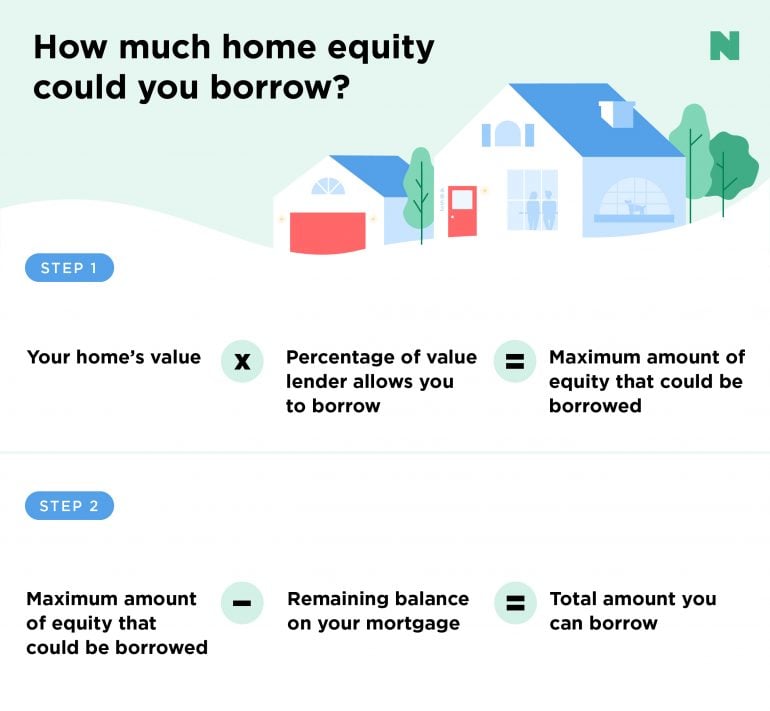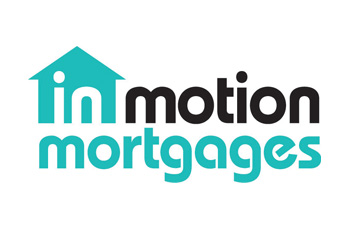Reviewing Different Types of Equity Release Mortgages You Can Choose From
Reviewing Different Types of Equity Release Mortgages You Can Choose From
Blog Article
Discovering the Different Sorts Of Equity Release Mortgages Available Today
Equity Release home mortgages present different alternatives for home owners aged 55 and over. equity release mortgages. These monetary products deal with various needs and preferences, permitting people to access funds from their residential property. From lifetime home mortgages to shared admiration home loans, each kind uses distinct advantages. Recognizing these options is crucial for making informed decisions. What factors should one take into consideration when picking one of the most suitable equity Release plan? The information that follow might clarify this crucial subject
Understanding Equity Release Mortgages
Equity Release mortgages offer home owners, typically those aged 55 and over, with a means to access the worth bound in their building without requiring to offer it. This economic option enables individuals to convert a section of their home equity into cash money, which can be used for numerous purposes, such as home renovations, settling financial obligations, or financing retirement.Equity Release can take various forms, but it basically involves loaning against the value of the home while keeping ownership. Home owners can select to receive a round figure or a series of smaller sized settlements, relying on their monetary needs and preferences.Additionally, the amount readily available for Release is affected by the residential property's value, the home owner's age, and details lending institution requirements. On the whole, recognizing equity Release home loans is crucial for property owners to make informed decisions about taking advantage of their home's equity while considering the long-lasting ramifications.
Life time Mortgages
Lifetime mortgages stand for among one of the most prominent kinds of equity Release. This financial product permits home owners, typically aged 55 or older, to obtain against the worth of their home while preserving possession. The loan, which is safeguarded against the home, builds up interest in time however does not call for monthly repayments. Instead, the financing and accrued passion are settled when the homeowner passes away or moves into long-term care.Lifetime home loans supply flexibility, as consumers can choose to receive a lump amount or select a drawdown facility, accessing funds as required. Importantly, many strategies featured a no-negative-equity guarantee, guaranteeing that consumers will never owe even more than the worth of their home. This feature provides comfort, allowing people to appreciate their retired life without the concern of depleting their estate. On the whole, life time mortgages serve as a feasible option for those looking for financial backing in later life.
Home Reversion Program

Drawdown Life Time Mortgages
While lots of home owners look for ways to access their riches, drawdown lifetime home loans provide a flexible option that permits individuals to Release funds progressively. This sort of equity Release home loan makes it possible for house owners to borrow versus the value of their property while keeping ownership. Unlike standard lifetime mortgages, drawdown plans allow debtors to access a portion of their equity upfront and withdraw extra funds as needed, as much as an established limit.This function can be specifically advantageous for those that desire to manage their finances meticulously, as it minimizes interest accumulation by only billing interest on the quantities attracted. Furthermore, drawdown life time mortgages usually include a "no unfavorable equity warranty," making sure that consumers will certainly never ever owe even more than their home's value. This alternative suits retired people that prefer economic security and flexibility, allowing them to fulfill unanticipated costs or keep their way of life without having to sell their residential or commercial property.
Boosted Lifetime Mortgages
Boosted Life time Home mortgages provide distinctive benefits for eligible homeowners seeking to Release equity from their homes. Recognizing the qualification standards is vital, as it determines that can gain from these specialized financings. However, it is likewise crucial to evaluate the prospective drawbacks linked with improved options, guaranteeing an all-round viewpoint on their usage.
Qualification Criteria Explained
Comprehending the qualification criteria for Boosted Lifetime Mortgages is important for prospective applicants seeking to access the equity in their homes. Usually, candidates need to be aged 55 or older, as this age demand is typical in the equity Release market. Homeowners should possess a residential or commercial property valued at a minimal threshold, which can differ by lender. Importantly, the property needs to be their main residence and in excellent problem. Lenders frequently assess the home owner's health and wellness condition, as particular health and wellness conditions might improve eligibility and advantages. Additionally, applicants ought to not have existing significant financial obligations protected against the building. Satisfying these criteria allows individuals to discover Boosted Lifetime Home mortgages as a feasible alternative for accessing funds bound in their homes.
Benefits of Improved Home Loans
After clearing up the qualification standards, it comes to be evident that Enhanced Life time Home loans use a number of considerable benefits for house owners seeking to take advantage of their residential property equity. Primarily, they supply access to a larger finance amount compared to basic lifetime mortgages, profiting those with wellness conditions or age-related variables that enhance their life span threat. This boosted borrowing capability enables homeowners to meet different financial needs, such as home improvements or retired life expenses. Additionally, these mortgages commonly come with adaptable settlement alternatives, allowing customers to handle their funds better. The no-negative-equity assurance better ensures that house owners will certainly never owe more than their property's worth, supplying satisfaction. On The Whole, Improved Life time Home mortgages offer an engaging alternative for eligible homeowners seeking monetary solutions.
Potential Disadvantages Considered
While Improved Lifetime Mortgages provide many benefits, prospective disadvantages warrant cautious factor to consider. One considerable issue is the influence on inheritance; the equity launched minimizes the worth of the estate entrusted to beneficiaries. Additionally, these home loans can build up considerable passion in time, leading to a substantial financial debt that may surpass the original loan amount. There may additionally be limitations on building modifications or rental, restricting homeowners' versatility. Boosted items commonly need specific health and wellness conditions, meaning not all homeowners will certainly certify. Taking care of the fees and fees linked with these mortgages can be complex, potentially leading to unexpected prices. Therefore, individuals ought to extensively evaluate their situation and seek advice from monetary experts before proceeding.
Shared Admiration Mortgages
Shared Appreciation Home mortgages represent a distinct monetary arrangement that permits property owners to gain access to equity while sharing future building worth increases with the lender. This method uses possible advantages such as lowered monthly repayments, but it also includes disadvantages that need to be meticulously considered. Understanding the eligibility needs is important for those curious about this alternative.
Idea Overview
Equity Release home mortgages, especially in the type of shared admiration home mortgages, supply house owners an one-of-a-kind financial option that permits them to access funds by leveraging the worth of their property. In this arrangement, a lender supplies a financing to the house owner, which is commonly paid back through a share of the building's future recognition in worth. This implies that when the property owner offers the building or passes official source away, the lending institution obtains a percentage of the enhanced value, as opposed to just the initial lending amount. Shared gratitude home mortgages can be appealing for those wanting to supplement their earnings or financing considerable expenditures while maintaining possession of their home. However, the monetary implications of shared recognition must be meticulously considered by potential borrowers.
Advantages and Drawbacks
Shared admiration home mortgages can provide significant financial advantages, they also come with noteworthy drawbacks that potential consumers must consider. These home mortgages allow home owners to access equity in their properties while sharing a part of any kind of future recognition with the loan provider. This plan can be advantageous during times of climbing property worths, providing significant funds without regular monthly repayments. Nevertheless, the primary downside is the possible loss of equity; home owners might wind up with substantially lowered inheritance for beneficiaries. Furthermore, the complexity of the terms can lead to misconceptions relating to payment commitments and the percent of admiration owed. It is crucial for customers to evaluate these variables carefully prior to committing to a common gratitude mortgage.

Eligibility Requirements
What requirements must home owners meet to get approved for a common admiration home loan? Largely, prospects have to be at least 55 years of ages, assuring they are within the target group for equity Release items. Furthermore, the home has to be their key house and usually valued above a defined minimum limit, frequently around ? 100,000. Lenders additionally assess the home owner's economic scenarios, consisting of earnings and arrearages, to establish they can take care of the home loan responsibly. Notably, the home must be in great problem and cost-free from considerable lawful encumbrances. Property owners need to likewise have a clear understanding of the terms, consisting of exactly how admiration will be shared with the lender upon sale or transfer of the residential or commercial property, as this affects total returns.
Choosing the Right Equity Release Alternative

Regularly Asked Concerns
What Age Do I Need to Be for Equity Release?
The age demand for equity Release commonly begins at 55 for most plans. Some service providers might use options for those aged 60 and above, reflecting varying terms based on individual scenarios and loan provider plans.
Will Equity Release Affect My Inheritance?
Equity Release can impact inheritance, as the amount borrowed plus passion lowers the estate's value. Heirs might receive much less than prepared for, depending upon the residential or commercial property's gratitude and the total debt at the time of passing.
Can I Relocate Residence With Equity Release?
The concern of moving residence with equity Release arises frequently. Typically, people can transfer their equity Release strategy to a new residential or commercial property, however certain conditions might use, calling for assessment with the lending institution for advice.
Exist Fees Related To Equity Release Mortgages?
Charges associated with equity Release home mortgages can include setup charges, appraisal costs, and lawful expenses. Additionally, there may be early payment costs, which can affect the total cost and economic ramifications for the debtor.
How Does Equity Release Effect My Tax Situation?
Equity Release can affect one's tax situation by possibly boosting gross income, as launched funds are considered resources. It generally does not sustain instant tax obligation responsibilities, making it essential to consult an economic consultant for personalized assistance.
Final thought
In recap, the variety of equity Release mortgages readily available today supplies property owners aged 55 and over multiple paths to access their residential or commercial property's value - equity release mortgages. Whether selecting a lifetime home mortgage, home reversion plan, or other options, each alternative presents distinctive advantages tailored to individual monetary needs. Careful factor to consider and assessment with an economic expert are vital to guarantee the chosen equity Release solution aligns with monetary situations and individual objectives, eventually helping with notified decision-making for a protected economic future. Equity Release mortgages existing various options for homeowners aged 55 and over. Equity Release home mortgages give home owners, typically those aged 55 and over, with a method to access the value linked up in their home without needing to offer it. Boosted Lifetime Mortgages supply distinctive benefits for eligible house owners seeking to Release equity from their homes. Equity Release mortgages, specifically in the form of shared gratitude home mortgages, provide homeowners an one-of-a-kind financial service that allows them to accessibility funds by leveraging the value of their residential property. In summary, the range of review equity Release home loans available today provides property owners aged Get More Info 55 and over numerous pathways to access their home's worth
Report this page